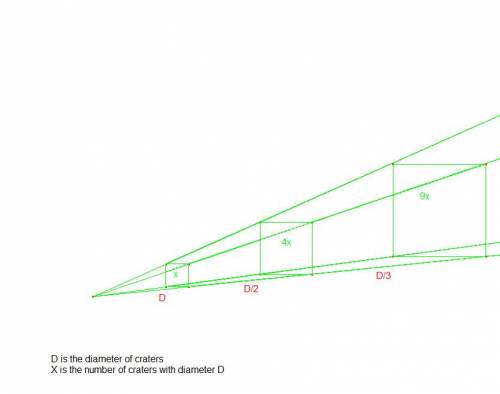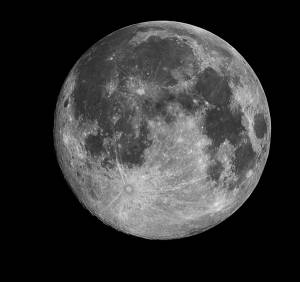Tabla de Contenidos
SIZE OF CRATERS.
We explained that the small craters are very common, and there are less large craters because there just aren´t very many large chuniks among the interplanetary debris, so theirs collisions with the Moon are rare. All of these, also we explain with the inverse-square law, because the Moon is rigid, and preserved law.
The inverse-square law.
Very often, the astronomers apply this law to the star´s apparent brightness: the amount of detectable radiation (apparent brightness) varies inversely as the square of the distance from an emitting object.

In our case, if here there are x craters of diameter D, there there are 4x craters of diameter D/2, and far away there are 9x craters of diameter D/3.





